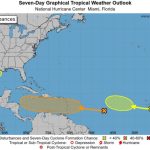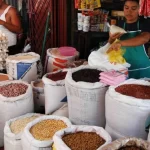How do residents of Greater Santo Domingo cope with the lack of electricity?

In the absence of electricity, those affected opt to go out into the streets to cool offRAUL ASENCIO
The heat and the lack of electricity are latent factors that have been part of the daily life of the residents of some of the crowded sectors of Greater Santo Domingo, especially in the last few months. Villa Juana, Villas Agrícolas, Capotillo, and Villa María were some of the areas that complained about the poor performance of the electricity service, which, in their opinion, makes daily coexistence difficult and weakens the ways to combat the heat.
Between conversations, the residents who were on the sidewalks of those districts or shopping in grocery stores and other establishments revealed to reporters of Listín Diario the tools they used to overcome the hot days and nights when for one reason or another, they were without electricity.
Either using electric plants, inverters, or candles, for those with fewer resources or going out to “catch fresh air” in the yard. These elements help them to keep the house or business illuminated, or in the first cases, they allow them to turn on any appliance that helps to cool down.
Viviana Rodríguez, a resident of Villa Juana, said that when there is no light at night, she usually lights a candle or candle to help her in the dark, while when she goes out in the morning, it is not necessary, but the heat “has to be endured.”
She said that she does not have the resources to buy an inverter or any other device to cover the lack of electricity. She also indicated that the electricity “is going out less and less,” but that same morning (Tuesday), it was out for approximately two hours.
In the same locality, José Luis, Amauri Capellán, and Reyna Tejeda sitting on the sidewalk of the grocery store managed by Capellán, commented that the electricity “is acting up.” The former commented that when the electricity goes out, what is left is to “pass work.” He has a seafood business on the same sidewalk and affirmed that he does not sell anything when this happens. “The seafood gets damaged for me there.”
“It (the electric power) goes out every Saturday morning and comes at 2:00 in the afternoon, they are always fixing something, supposedly changing the meters, but we are going to believe them”, expressed Amauri, with apparent disbelief while the others agreed with him.
They also said that on hot days they have no choice but to sit outside their businesses or residences to “fuck outside.” On the other hand, if the electricity fails at night, they do not sleep, according to José Luis.
A resident of the area named Marco Antonio, in charge of another smaller grocery store, reaffirmed that the power goes out every Saturday. Still, he has not complained to the electric company either because he considers “that is a waste of time.” He said that when the power goes out in the morning, they have to leave everything off until it arrives because they do not have the availability to buy power plants or inverters.
Villas Agrícolas
“It is going out a lot, almost every day, it lasts an hour, an hour and a half, and it comes back. It’s been like that lately, for a month,” said Joel, an employee of the Baratón grocery store in Villas Agrícolas.
The young man who works in this store in the sector said that when the power goes out, his favorite tool is the inverter, which prevents products that require refrigeration from being damaged during blackouts.
Like him, José Jiménez said that the power “sometimes goes out” and that in one day, the electricity can be cut off up to two times, even for several hours. He explained that there are two circuits in the sector, and the “24 hour” circuit is the one that goes out most frequently.
“When it (the power) goes out what is left is darkness and heat. I don’t have an inverter. With this heat during the day, at night the walls and the zincs are steaming, sometimes you have to go out”, he said.
Likewise, Jesús, a resident of this town and owner of a pallet shop stated that “the light goes out all the time and sometimes they take it away for a whole day, during the week it goes out up to three or four times… and it lasts one or two hours”.
According to her testimony, she also expressed her dissatisfaction with the increase in electricity rates, going from paying 800 pesos to 1800 pesos, with no change in consumption.
He revealed that when there is no electricity in his home, he cannot help himself with plants or inverters “because the poor have nothing, I am poor, I have nothing,” and he only has to “go out to the patio” to fight the heat.
How much does it cost to help oneself from the lack of electricity?
Most people who lose electricity for a prolonged period of time in their homes or establishments admit that they must resort to using power plants, inverters, or even gas lamps, but what is the cost of this?
According to the establishments where this equipment can be purchased, a new diesel-electric plant can go from RD$40,000 to 72,000 pesos, depending on the size and capacity.
While inverters range from RD$9,000 to 40,000 Dominican pesos depending on capacity, time of use, and where it is purchased, some require two batteries ranging from RD$12,000.
Gas lamps start at RD$400, while candles cost between RD$10 and 15 pesos. Candles start at RD$50 in grocery stores and up to RD$400 in supermarkets.
What do the authorities say about the lack of light?
Last week, the general manager of the Empresa Distribuidora de Electricidad del Este (Edeeste), Andres Julio Portes, pointed out that there is a difference between a blackout and a breakdown, indicating that there are no more extended blackouts, but that breakdowns can occur.
These anomalies could be caused by an obsolete system, charging of circuits, irregular installations, and theft, but these are being corrected, according to what he explained.
For his part, the general manager of Empresa Distribuidora de Electricidad del Sur (Edesur), Milton Morrison, said that one of the leading causes of the failure in the electricity service is the intense heat wave affecting the country.
Given this, Edesur Dominicana announced implementing a new technological system in which drones with thermographic cameras measure the overload on the lines in real-time.
This equipment will collect the information and send it to the Network Operations Center (COR) to take preventive measures in the face of constant blackouts.
















